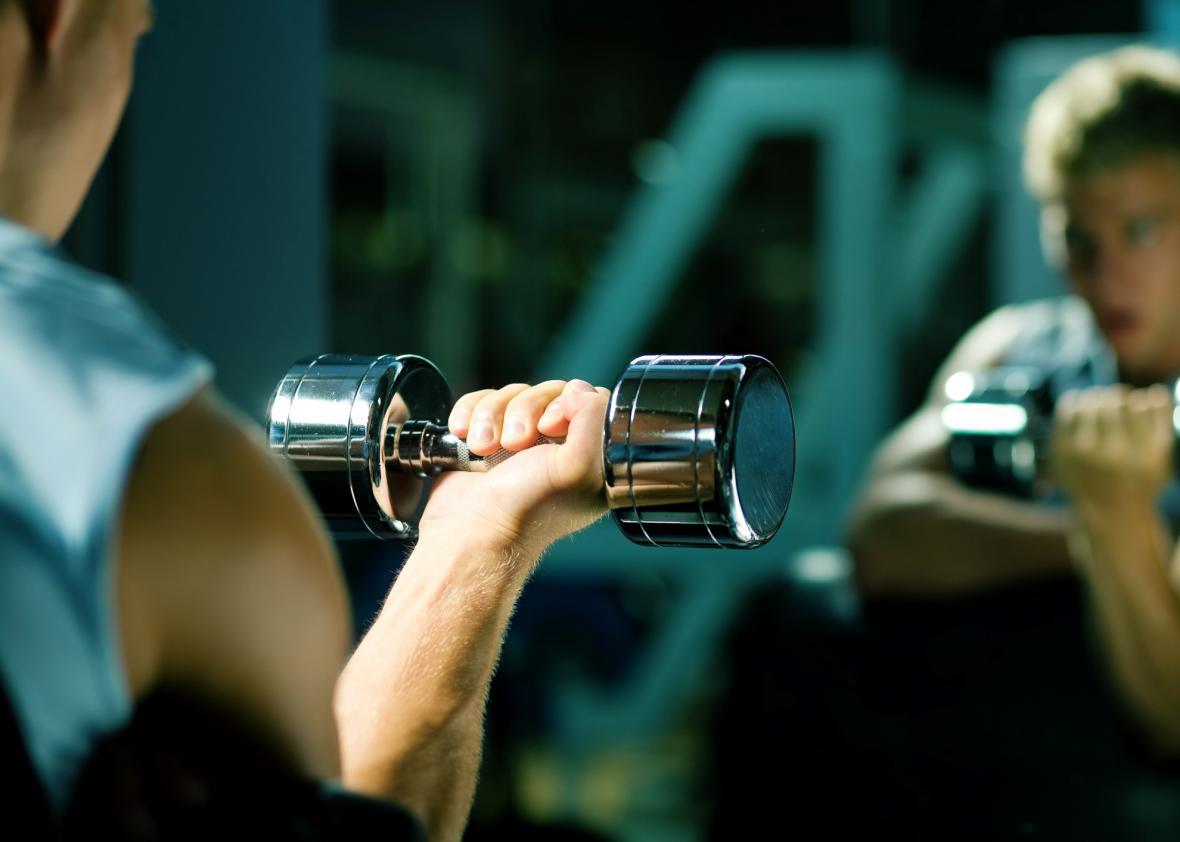I was on national TV, once. In 2015, I appeared on a segment of The Insider when us trans folks were becoming of the moment. I responded to an Instagram callout for trans people to join a modeling agency. I rode a train to New York City from a suburb of Philadelphia, and walked far too many blocks in dress shoes on a hot September day to a gorgeous apartment on Broadway filled with equally gorgeous trans people.
What drove me here? I found an odd new emotion attached to my body that year. I began to loathe my love handles and obsessed over my chubby stomach. I wanted to prove I was still one of the beautiful people. What better way than an appearance with a trans modeling agency? When the show aired, they featured my soft face before the segment of another trans man with “rugged good looks and the six-pack abs of a supermodel.” The not-quite-beautiful-enough feeling lingering in my gut exploded into full-on body hatred.
Before trans visibility flooded our newsfeeds, I didn’t relate to the bodies I saw represented in magazines or TV shows. My body didn’t feel male or female. Without those labels, it lacked representation. My trans body held a particular abstraction that left me shielded from the pressures of comparison. My sense of beauty came from how I felt about myself. And gosh darn it, I felt fabulous.
In those early years of my transition, my only point of reference was the handful of trans guys on LiveJournal and the three trans guys in my hometown. I felt like a stud with my five feet and 10 inches of height and my big hands. My skinny arms weren’t even on my mind. The community I knew wasn’t striving to be hyper-masculinized with softball-sized biceps. We were simply happy with our deepened voices and dreamed of the day when we’d have flat chests.
Back then, I watched as my girlfriends struggled with the overwhelming pressure to fit into some unachievable norm. I couldn’t understand why they felt this need to look different than themselves. They had an unseen connection to bodies in the media that I had never experienced. There was an invisible and destructive burden placed on them to measure up to photoshopped versions of the perfect woman.
Then the ideal picture of trans men began appearing in magazines, highlighting muscular physiques. Suddenly I had a standard for myself. I had to have six-pack abs while spreading my message about trans acceptance. I don’t blame these trans men. They’ve worked hard for their bodies—I know the struggle. I lay the blame on our culturally established norms for what constitutes a male body. Somehow we found the light, but at what price?
In her essay “An Appetite for Activism,” Erin A. Rand notes that “visibility always works both within and against dominant cultural formations.” The surge in trans visibility requires trans men’s physical appearance to be read within the gender binary. Transgender people are often understood only within the social norms of gender. In our culture, that means if you are a trans masculine person you better have a chiseled face and lats that look like angel wings.
“I feel more pressured to conform to cis standards of masculinity. When I say I’m trans, and people pull an image up of a famous trans man, and I don’t fit the bill, they don’t recognize me as a man,” explained Gavin Jules, a fellow trans man.
The pressure isn’t just from outside the community. Many of us trans folks have absorbed and reflected back a socially-enforced masculinity. We’ve embraced an advertised version of masculinity instead of identifying our own brand.
“When I first came out I used to follow all these repost pages (on Instagram) for trans folks. Every person that was reposted was fit, beautiful, very masculine or very feminine. Rarely were trans women posted. Almost all the trans men posted were very passing. I felt like I was never going to pass as male ever,” wrote Casey Seaman in an email.
We are being packaged and sold back to ourselves. How do we maintain our unique representation of self and not fall victim to the media pressure? For me, I have unfollowed repost pages and stopped saturating myself in someone else’s journey. I’ve worked incredibly too hard for these hairy legs and scarred chest. Nothing is perfect about my body, but it is powerful. It represents a resistance to gender norms. It symbolizes a future where gender is more expansive than a binary.
How can we create inclusive visibility? It starts with respecting our individual journeys. We have to understand that one trans person’s story is not a representation of us all. We have started to see more gender non-binary folks in the media. We need to see more trans people that do not fit the culturally-typical body type. We aren’t all going to fit under your model-agency umbrella, but that doesn’t mean we are going to be left out in the rain.
